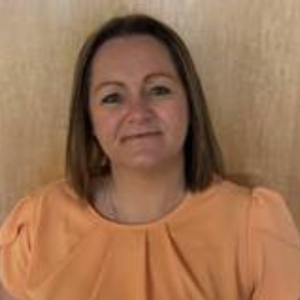
Kirsty Charlton knew she wanted to work with people with learning disabilities from a very young age.
“My passion started in first school,” she said. “I was fortunate that I went to a mainstream school combined with a special educational needs school and there was a lot of integration.
“I saw those who were vulnerable and learned how to include them in the playground and in activities.”
Kirsty finished school in 2000 and got a job as a nursing assistant at Cumbria, Northumberland, Tyne and Wear NHS Foundation Trust (CNTW). After three years, she was seconded to university to do a diploma in Learning Disability Nursing Studies, qualifying in 2006 and securing a job within learning disability services.
In 2010, she went back to university to study for a degree supported and funded by the Trust. From there, she became a clinical team lead and a ward manager within autism services, part of the inpatient Learning Disability services.
A clinical manager role followed, firstly in learning disability services and children and young people’s services which she describes as great roles and helped with service development. She later progressed into the Associate Nurse Director role and worked across both metal health and learning disability services.
Now, Kirsty is an Associate Director within the Trust’s inpatient services. She is part of a senior leadership team responsible for supporting eight inpatient mental health wards and three ECT (electroconvulsive therapy) teams.
“We ensure staff are equipped to deliver high quality care, embedding evidence based practice to ensure that service user and carer experience is the best it can be,” Kirsty explained.
“It’s also our job to ensure staff wellbeing is a priority, and understand barriers to discharge, looking at why people may be staying in hospital longer than they should, whilst also managing our financial budgets.”
Kirsty says working in these services can be challenging over the years but has been extremely rewarding.
“I have worked with some of the best nurses and wider teams who I have learned a great deal from and in turn have been able to mentor many of the nurses. Seeing their values and passion for the profession is just priceless.”
For her, working with people with learning disabilities is about making sure individuals have equal opportunities, embracing alternate ways of working to meet individual needs.
“It’s about inclusion and advocating on behalf of someone who may not be able to advocate for themselves,” she said.
“The aim is to relocate people back into the local community and help them develop the skills to cope with everyday life.
“Communication is significant within learning disability nursing. Understanding what is being communicated via various forms of communication; body language, behaviours or responses to situations. Some people are non-verbal so require staff to be able to communicate in different ways, using Makaton or visual aids.
“Sometimes the length of stay in hospital can be longer for people with learning disabilities due to the complexities or co-morbid diagnosis and requiring bespoke support packages of care. Lots of services I’ve worked in have been national services, so you’re supporting some of the most complex cases of care in the country.
“By working collaboratively, you can collectively understand the individual needs in order to provide the right care and treatment.”
Kirsty works in mental health services now but says the transferrable skills you gain from learning disability nursing are invaluable.
“Some people think it would be a detriment to progression, but it’s all down to those transferrable skills,” she said.
“There is a lot of crossover with mental health nursing; the core values are the same. You have to be caring and compassionate and be able to empathise with others.
“I’ve had so many opportunities at CNTW. When I first started 24 years ago, I never thought I’d be fortunate enough to be in the position I’m in now. I love my job and enjoy supporting the changes to enhance the quality of care.”
